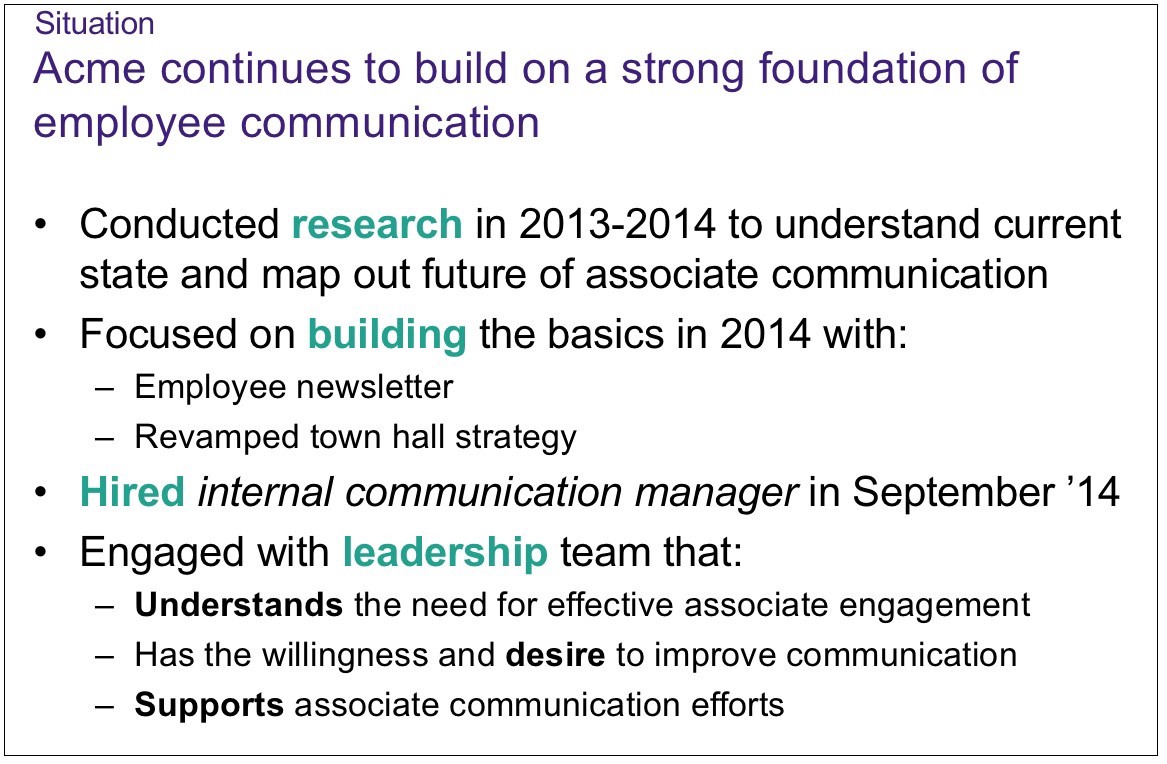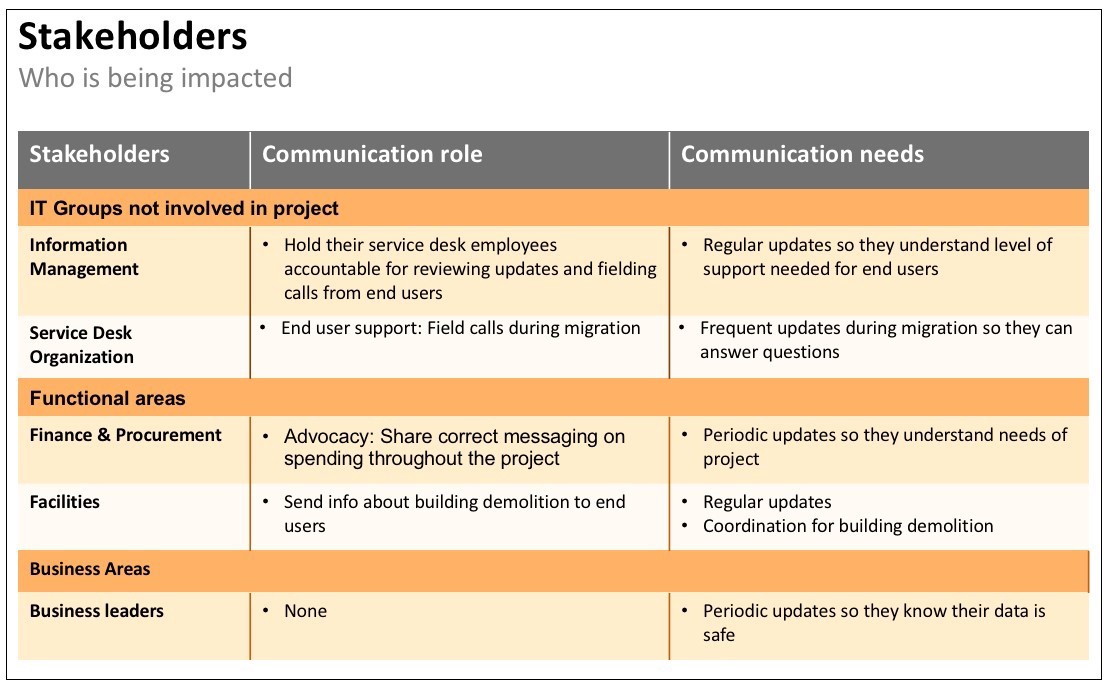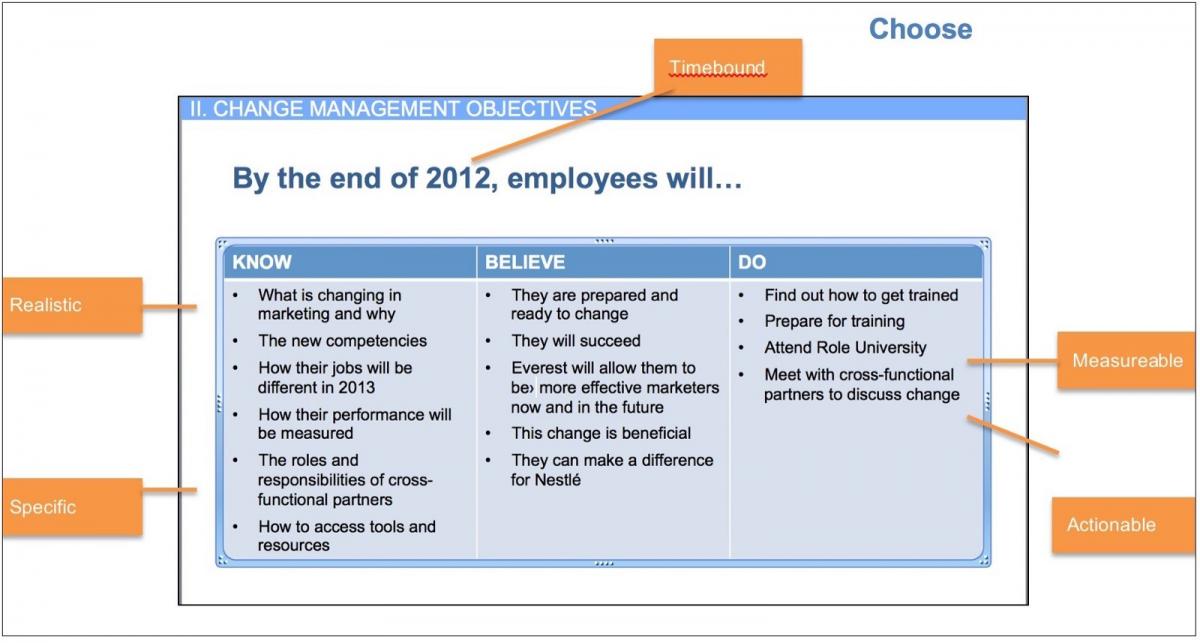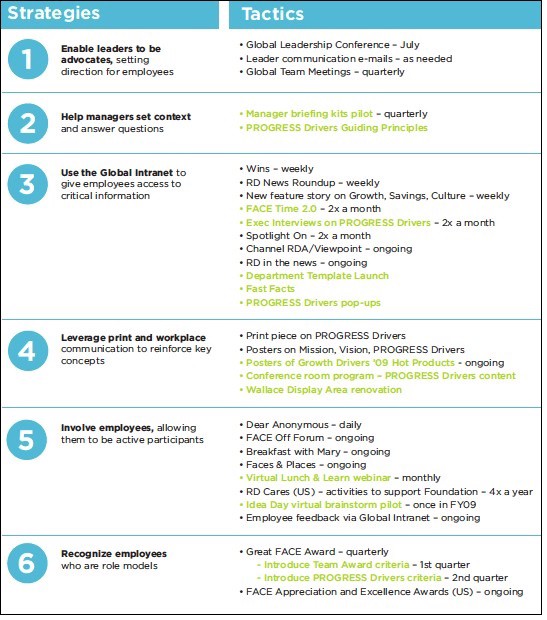
Here’s the good news about internal communicators: We’re really good at getting things done. While other functions are mired in meaningless meetings, we actually produce — organizing a leader meeting, posting web content, producing a cool infographic.
But this tactical strength is also a weakness. We’re often perceived as order takers. (“Do you want fries with that?”) And, even when some stakeholder is not trying to dictate our approach, it’s too easy for us to plunge into action — without pausing to plan.
That’s why developing an effective employee communication plan is so important. In fact, I often use the following metaphor to illustrate the critical role that planning plays.
Imagine you decide to take a trip. Do you begin by jumping in the car, stepping on the gas pedal, pulling onto the highway, and heading west just because the road takes you that way?
Usually, no. Instead, most of us don’t depart until we have a clear destination in mind. And once we know where we want to go, we usually plot our course (thanks, Google Maps). Since we want to quickly get there, we choose the shortest route.
This metaphor demonstrates the mistake many of us make in communicating to engage employees: We just start doing it without having a map. How many times have you heard a colleague say, “We need to communicate this issue. I’m going to write an email.” Or: “People need to know about this policy. I’ll create a PowerPoint presentation.”
But this tactical approach can cause your communication to miss the mark. You risk using the wrong tool for the job. Communication can happen too soon, be over too quickly, or not provide what employees need to know in order to make smart choices. (And, to return to my metaphor, you probably get lousy gas mileage.)
It’s been my experience that, when you take the time to develop a communication plan, your program is more likely to achieve your objectives. (And studies show that planning for any business activity improves performance by as much as 30%)
So, stop the car for a minute and build a compelling internal communication plan by following these 11 steps:
1. Take a collaborative approach to planning
When you involve key stakeholders in creating your employee communication plan, you reflect diverse perspectives and gain buy-in from crucial influencers. That’s why I’ve found it’s best to take a collaborative approach by facilitating a hands-on planning session. Meeting face to face is best, but you can also hold one or more virtual, web-based sessions.
Who should be involved in collaborative planning? Consider including:
· Senior leaders. Endorsement from an executive sponsor validates your efforts and influences other key stakeholders to get involved. (Leaders often don’t stay for the whole planning workshop. But it’s great to have a leader kick off the session.)
· Your key stakeholder, of course — the person for whom you’re developing the plan.
· Colleagues of your stakeholder — for example, members of his/her team.
· Subject matter experts. For example, a benefits communication plan might include the person who manages medical benefits.
· Functional support. Consult with skilled individuals from IT, HR, finance, etc., to determine if your plan is feasible.
· Regional/site representatives. Involving people from other regions or sites can provide fresh ideas and give insight into how well your plan will be accepted in other work cultures or environments.
Once you’ve gathered everyone together, spend two to four hours gaining consensus on key building blocks of the internal communication plan, including target audiences/ stakeholders, objectives, strategies, tactics and timeline. (If you can’t meet in person, schedule two separate virtual sessions using a web meeting platform.)
2. Choose the plan format that works for you — and creates the best foundation for sharing your plan with key stakeholders
Most of the time, I develop plans in Microsoft PowerPoint. This familiar format can be easily created and allows me to present the plan.
Occasionally, if the plan needs a lot of details, I create a communication plan in Microsoft Word. Word plans tend to be very, well, wordy, which makes them difficult to present. (However, the level of detail can be helpful for implementing tactics.) Especially when sharing the plan with busy senior leaders, I sometimes create a one-page version — often designed as a 11˝x17˝ mini-poster.
Note that I almost never develop a plan in Microsoft Excel. The problem with Excel is that it’s a series of cells to fill — which encourages communicators to think tactically, not strategically. Once you have your strategic plan built, you can use Excel as a way to track tactics.
3. Give your plan a consistent framework
While each communication plan is unique, I’ve found it helpful to use the same elements every time. That makes the process easier and creates consistency from one plan to another, so stakeholders become familiar with the way you approach planning. Of course, you should choose the sections that work for you, but here are the elements I find most helpful:
· Situation analysis
· Objectives
· Strategies
· Key messages
· Tactics and timing
· Measurement
4. Develop a situation analysis
To get your strategic communication plan off to a great start, begin by creating a situation analysis, a snapshot that conveys what’s going on at that moment in time. A focused situation analysis builds a strong foundation for your plan. It also helps you make a case for the objectives, strategies and tactics that follow.
Consider the following questions when creating a situation analysis:
· Why is this strategic communication plan being developed?
· What is the current state of communication within the organization?
· What is the current state of the organization (reorganization, merger, etc.)?
· What are the organization’s goals or strategies?
· What must employees understand to achieve those goals?

5. State the business or organizational goal your plan will support
Either as part of your situation analysis (described above) or as the lead-in to communication objectives (explained in the next section), it’s helpful to articulate how your plan will support a broader effort. Remember that your communication plan is not just about crafting and delivering messages — it’s about the organization you support. When you put the business goals front and center, it helps align your activities and shows key stakeholders how employee communication will make a difference to help the organization succeed.
6. Identify stakeholders
To help you create a communication plan focused on outcomes, it’s important to identify your key stakeholders. A stakeholder profile:
· Defines who is involved; for example, are some types of employees more affected by a change than others
· Creates a focus on the “customers” of communication, so you design your plan to meet employees’ needs
· Helps determine channels and messaging
When creating a stakeholder profile, consider the following questions:
· Who needs to know this information?
· What’s on their minds?
· What do they need from us?

7. Set strong objectives
Objectives are the core foundation for your plan. But objectives are the most challenging part of a plan because they require the deepest thinking, and take the most time to create.
Here are three key things to know about objectives:
· Effective objectives describe a desired outcome. They represent a commitment: “Here’s what we pledge to accomplish.”
· As you know, the best objectives are SMART: Specific, Measurable, Attainable, Realistic and Timebound.
· Of all the SMART attributes, measurable is most important (and often the most challenging).

8. Develop clear strategies, specific tactics and a tangible timeline
Strategies are methods or approaches for achieving your objectives. Many communicators have a natural tendency to jump from setting objectives right to specific tactics (the actions you’ll take to deliver on your strategies).
Resist that temptation and think in broad terms about what approaches are possible. Begin by listing a number of different strategies — even if each does not quite achieve your objective — to make sure you’re exploring every opportunity. Then, narrow the list of strategies to those that will most effectively and efficiently achieve your objectives.

While strategies outline how you’ll achieve your plan objectives, tactics describe the specific tools you’ll use and/or steps you’ll take to deliver on your strategies.
When creating tactics:
· Think about existing and new communication channels
· Include details, such as roles for key players
· Review your tactics to ensure each one supports a strategy (some may support multiple strategies) and when possible, call out which strategy the tactic supports — and it may support more than one strategy
Once you’ve established tactics, include a calendar of key dates to help you anticipate what’s coming up so you can avoid working in “crisis mode.” A timeline also helps you see how all of your suggested tactics will work together over a period of time. When creating a timeline, include details like dates for completing tasks.
9. Create a message platform
How can you ensure that you tell a succinct and cohesive story about the topic you’re communicating? Create a message platform as part of your internal communication plan. To begin, start with your key message, also known as a high concept or elevator speech: 15 to 20 words that summarize the most important point. Then build out details
Here are three questions that will help you develop a message frame:
1. What do employees want to know?
2. What is your objective?
3. What’s the news?
10. Include how you’ll measure progress and demonstrate success
How will you know if you’ve achieved your objectives? Measurement.
That’s why I always include a strategy for measuring employee communication in every plan I help create. A section on measurement is the natural bookend to the objectives page at the beginning of your plan.
By measuring communication, you demonstrate value. Use ongoing metrics — such as email clicks and opens and web statistics — to show how well communication is performing. And include surveys you’re planning, such as spot surveys after town hall meetings or an annual internal communication survey. By featuring metrics and keeping them top of mind, you’ll check your progress on a regular basis.
11. Keep your plan alive
Your plan should do more than record tactics and messages for the year. It should also establish priorities and keep everyone on track, which is why it’s important that it has staying power.
Make a commitment to revisit the plan on a regular basis — as often as weekly if you’re managing an intense program, but usually once every month or two — to check progress, make adjustments and ensure that you’re accomplishing all the great things you set out to do.
And don’t forget to report on your progress as you go — and share what you’ve accomplished when you’ve achieved your objectives.
Orginially posted on medium.com.




